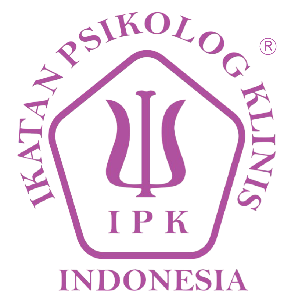Eksplorasi Implementasi Circle Time pada Sekolah Dasar yang Menerapkan Gerakan Sekolah Menyenangkan
Exploration of Circle Time Implementation in Elementary Schools of Gerakan Sekolah Menyenangkan
DOI:
https://doi.org/10.26740/jptt.v12n1.p1-18Keywords:
Circle time, pembelajaran sosial emosional, Sekolah DasarAbstract
This study aims to explore the effectiveness of circle time method as perceived by both teachers and students in the elementary schools that implement "Joyful Learning Movement” or Gerakan Sekolah Menyenangkan (GSM). The participants consisted of 22 students and 7 teachers from four elementary schools that implement GSM in Yogyakarta, Indonesia. A qualitative method was used, and data were collected using interviews and focus group discussions. Content analysis was used to analyze the data. The findings can be categorized in three themes, namely the benefits, supporting factors, and challenges of the circle time implementation. The benefits of circle time are indicated by the perceived improvement of children in terms of self-confidence, self-management, academic motivation, empathy, social skills, and active learning style. The supporting factors for circle time implementation as reported by participants include GSM itself, the flexibility in implementing circle time, and the teachers’ open-mindedness. For the challenging factors, participants suggest that limited time, available space, solid learning materials or curriculum, and students’ internal conditions are the main factors. The research findings can contributes to the better implementation of circle time in elementary schools.
Keywords: Circle time, emotional-social learning, elementary school
Abstrak: Penelitian ini bertujuan untuk mengungkap efektivitas circle time di Sekolah Dasar yang mengikuti Gerakan Sekolah Menyenangkan (GSM) dari sudut pandang guru maupun murid. Partisipan penelitian terdiri atas 22 murid dan 7 guru dari empat sekolah dasar GSM di Yogyakarta, Indonesia. Penelitian ini menggunakan metode kualitatif dengan wawancara dan focus group discussion sebagai teknik koleksi data. Analisis konten digunakan untuk menganalisis data. Hasil penelitian menunjukkan manfaat, faktor pendukung, dan penghambat dalam penerapan circle time. Manfaat circle time ditunjukkan dengan persepsi subjek atas peningkatan kualitas siswa dalam kepercayaan diri, manajemen diri, motivasi akademik, empati, keterampilan sosial, dan gaya belajar yang lebih aktif. Sedangkan faktor pendukung circle time adalah GSM itu sendiri, fleksibilitas dalam pelaksanaan circle time, dan keterbukaan pikiran dari guru. Adapun faktor penghambat adalah keterbatasan waktu, tempat, materi pembelajaran dan kurikulum yang padat, serta faktor internal dari siswa sendiri. Hasil penelitian ini dapat memberikan wawasan yang berguna untuk sekolah dasar yang menerapkan circle time di sekolahnya.
References
Alder, H. (2001). Boost Your Inteligence, Pacu EQ dan IQ Anda (terjemahan). Penerbit Erlangga
Bustamante, A. S., Hindman, A. H., Champagne, C. R., Wasik, B. A. (2018). Circle Time Revisted: How Do Preschool Classrooms Use This Part of the Day. The Elementary School Journal, 118 (4). https://doi.org/10.1086/697473
Candra, N. P., & Rizal, M. N. (2019). Sekolah Menyenangkan: Konsep Sekolah yang Mempromosikan Wellbeing Berdasarkan Suara Anak-Anak, Orang Tua, dan Guru di Indonesia: Grounded Analisis. (Tidak diterbitkan). Gerakan Sekolah Menyenangkan.
Cohen, J. (ed.). (2001). Caring classrooms/ intelligent schools: The social emotional education of young children. Teachers College Press.
Cohen, J. (2002). Psychoanalysis and the education of children. Journal of Applied Psychoanalytic Studies, 4(Special Issue), 1-4. http://dx.doi.org/10.1023/A:1015785226222
Cohen, J. & Sandy, S. (2003). Perspectives in social-emotional education: Theoretical foundations and new evidence-based developments in current practice. Perspectives in Education, 21(4), 41-54. https://www.researchgate.net/publication/235436174
Curry, M., & Bromfield, C. (1998). Circle Time In-service Training Manual. Nasen.
Glazzard, Jonathan (2016). The Value of Circle Time as an Intervention Strategy. Journal of Educational and Developmental Psychology, 6(2), 207-215. http://dx.doi.org/10.5539/jedp.v6n2p207
Gerakan Sekolah Menyenangkan (GSM). (2014). Tentang Kami Gerakan Sekolah Menyenangkan. https://www.sekolahmenyenangkan.org/tentang-kami/
Goleman, D. (2002). Working with Emotional Intelligence (terjemahan). PT. Gramedia Pustaka Utama
Krissandi, A., & Rusmawan, R. (2015). Kendala Guru Sekolah Dasar dalam Implementasi Kurikulum 2013. Cakrawala Pendidikan, 34(3), 457-467. https://doi.org/10.21831/cp.v3i3.7409
Hadi, S. (2011). Pembelajaran Sosial Emosional Sebagai Dasar Pendidikan Karakter Anak Usia Dini. Jurnal Teknodik, 25(2), 227-240. http://dx.doi.org/10.32550/teknodik.v0i0.104
Hsieh, H, -F, & Shannon, S. E. (2005). Three approaches to qualitative content analysis. Qualitative health research, 15(9), 1277-1288. https://doi.org/10.1177/1049732305276687
Hurst, B., Wallace, R., & Nixon, S. B. (2013). The Impact of Social Interaction on Student Learning. Reading Horizons: A Journal of Literacy and Language Arts, 52(4), 375-398. https://scholarworks.wmich.edu/reading_horizons/vol52/iss4/5
Kautz, Heckman, Diris, Bas ter Weel, & Borghans. (2014). Fostering and measuring skills: Improving cognitive and non-cognitive skills to promote lifetime success. Organization for Economic Cooperation and Development. https://www.oecd.org/education/ceri/Fostering-and-Measuring-Skills-Improving-Cognitive-and-Non-Cognitive-Skills-to-Promote-Lifetime-Success.pdf
Khusniyah, N. L. (2018). Peran Orangtua Sebagai Pembentuk Emosional Sosial Anak. Jurnal Universitas Negeri Mataram, Indonesia, 11(2). 87-101. https://doi.org/10.20414/qawwam.v12i1.782
Mosley, J. (2017). Step-by-Step Guide to Circle Time for SEAL. http://www.circletime.co.uk
Mosley, J. (2009). Quality Circle time in the Primary Classroom. LDA.
Ramadhanti, M., Sumantri, M. S., & Edwita, E. (2018). Pembelajaran Sentra dalam Membangun Kecerdasan Jamak di Sekolah Dasar. Journal of Elementary School, 1(1), 9-21. https://doi.org/https://doi.org/10.31539/joes.v1i1.168
Salirawati, D. (2021). Identifikasi Problematika Evaluasi Pendidikan Karakter di Sekolah. Jurnal Sains dan Edukasi Sains, 4(1), 17-27. https://doi.org/10.24246/juses.v4i1p17-27
Santangelo, N. (2020). Perceptions of Circle Time in a Third-Grade Classroom. Masters of Education in Teaching and Learning. 28. https://digitalcommons.acu.edu/metl/28
Santrock, J. W. (2007). Psikologi Pendidikan (Edisi Terjemahan). Kencana.
Supardi, U. S. (2012). Arah Pendidikan di Indonesia dalam Tataran Kkebijakan dan Implementasi. Formatif: Jurnal Ilmiah Pendidikan MIPA, 2(2), 11-121. https://journal.lppmunindra.ac.id/index.php/Formatif/article/download/92/89
Suriadi, & Yuliani, R. (2006). Asuhan Keperawatan Pada Anak. Sangung Setia.
Suwarjo. (2012). Penerapan Student Centered Approach pada Pembelajaran Taman Kanak-Kanak Kelompok B (Studi Kasus di Sekolah Laboratorium Rumah Citta). Jurnal Pendidikan Anak, 1(1). 79-102 https://doi.org/10.21831/jpa.v1i1.2924
Tominey, S. L., Bryon, C. O, Rivers S. E, & Shapses S. (2017). Teaching Emotional Intelligence in Early Childhood. Young Children, 72(1). https://www.naeyc.org/resources/pubs/yc/mar2017/teaching-emotional-intelligence
Wahyuni, A. (2018). Upaya Meningkatkan Perkembangan Kognitif Anak Usia Dini dalam Pembelajaran Pai Melalui Pendekatan Beyond Centers and Circle Time (BCCT). Al-Riwayah: Jurnal Kependidikan, 10(1), 243-267. https://doi.org/10.47945/al-riwayah.v10i1.151
Wahyuni, A. P. S., Suwatra, I. I. W., & Sudatha, I. G. W. (2013). Pengaruh Pendekatan BCCT (Beyond Center and Circle Time) Terhadap Prestasi Calistung Siswa Kelas I SD di Desa Sudaji Kecamatan Sawan Kabupaten Buleleng. Mimbar PGSD Undiksha, 1(1), 1-12. https://ejournal.undiksha.ac.id/index.php/JJPGSD/article/view/1485/1346
Downloads
Published
How to Cite
Issue
Section
License
Copyright (c) 2021 Jurnal Psikologi Teori dan Terapan

This work is licensed under a Creative Commons Attribution-NonCommercial 4.0 International License.
Authors who publish in this journal agree to the following terms:
Copyright in any article is held by the author.
The author grants the journal, publication rights with the work simultaneously licensed under a Creative Commons Attribution License that allows others to share the work with an acknowledgment of the work's authorship and initial publication in this journal.
Authors may enter into separate, additional contractual arrangements for the non-exclusive distribution of the journal's published version of the work (e.g., posting it to an institutional repository or publishing it in a book), with an acknowledgment of its initial publication in this journal.
Authors are permitted and encouraged to post their work online (e.g., in an institutional repository or on their website) prior to and during the submission process, as this can lead to productive exchanges, as well as earlier and greater citation of published work.
 Abstract views: 1549
,
Abstract views: 1549
, PDF Downloads: 1121
PDF Downloads: 1121

















